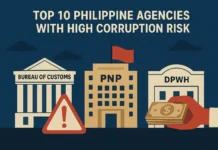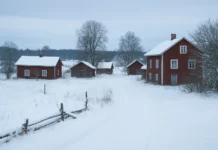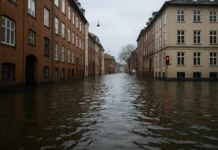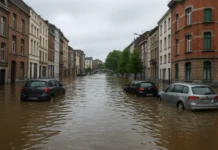Russia remains one of the world’s largest and most resource-rich nations, spanning 11 time zones and holding vast reserves of oil, gas, and minerals. Yet despite its size and strength, the country struggles with economic sanctions, political centralization, inequality, and population decline. These challenges affect millions of Russians and shape the nation’s role on the global stage.
This article examines the 10 major problems in Russia, providing insight into how each issue impacts society, the economy, and the country’s future stability.
Here Are The 10 Biggest Problems in Russia
Economic Sanctions and Isolation
Western sanctions linked to geopolitical tensions have severely restricted trade, investment, and access to global financial systems. This isolation hampers growth, increases inflation, and limits the import of essential technologies for key industries.Declining Population and Low Birth Rate
Russia’s population has been shrinking due to low fertility rates, high mortality, and emigration. The aging population challenges the workforce and strains the healthcare and pension systems.Income Inequality and Poverty
While Moscow and St. Petersburg prosper, many rural regions remain underdeveloped. Around 13–14% of Russians live below the poverty line, and inequality continues to widen, impacting social cohesion.Corruption and Bureaucracy
Endemic corruption and a cumbersome bureaucracy slow innovation, deter investment, and weaken public trust. Transparency International consistently ranks Russia low on global corruption indices.Dependence on Oil and Gas
Russia’s economy relies heavily on energy exports. Fluctuations in global oil and gas prices make fiscal planning challenging, while the energy transition worldwide poses a threat to its long-term economic model.Infrastructure Decay
Many roads, bridges, and utilities outside major cities remain outdated. Harsh climates and limited regional investment contribute to deteriorating transport networks and service delivery gaps.Brain Drain and Skilled Migration
Highly educated professionals — including scientists, engineers, and IT workers — are increasingly moving abroad in search of better opportunities. This loss of talent undermines innovation and economic competitiveness.Press Freedom and Political Centralization
Independent journalism faces restrictions, and decision-making remains highly centralized. Limited political competition can stifle policy innovation and reduce government accountability.Environmental Pollution and Climate Risks
Industrial pollution, deforestation, and melting permafrost pose serious environmental threats. Climate change increases wildfires and damages infrastructure built on thawing ground in Siberia.Healthcare and Demographic Health Issues
Despite improvements in medical access, Russia faces challenges like high alcohol-related mortality, limited rural healthcare, and an aging population that drives up medical costs.
Key Economic Indicators of Russia
| Indicator | Latest Data (2025 est.) | Notes |
|---|---|---|
| GDP Growth Rate | ~1.2% | Slowed due to sanctions and restricted exports |
| Inflation Rate | ~6.5% | Persistent price pressures on imports |
| Unemployment Rate | ~3.5% | Relatively stable, supported by state programs |
| Population Growth | -0.6% | Declining population trend |
| Public Debt | ~20% of GDP | Low nominal debt, but fiscal pressures are growing. |
| Oil & Gas Share of GDP | ~30% | High dependency on energy exports |
| Poverty Rate | ~13.5% | Persistent inequality and rural hardship |
Frequently Asked Questions (FAQs)
What is Russia’s main economic issue?
Economic sanctions and over-reliance on energy exports remain the most significant obstacles to sustainable growth.
Why is Russia’s population declining?
Low fertility rates, emigration, and public health challenges have contributed to a steady decline in the population.
How does corruption impact Russia’s economy?
Corruption discourages foreign investment, limits business innovation, and reduces trust in public institutions.
Does climate change impact Russia?
Yes. Melting permafrost, wildfires, and unpredictable weather increasingly threaten infrastructure and agriculture.
Authoritative Sources for Russia’s Biggest Problems
| # | Problem | Annotation |
|---|---|---|
| 1 | Economic Sanctions | Describes trade restrictions, export limits, and effects on key industries. |
| 2 | Population Decline | Provides demographic data and fertility trends. |
| 3 | Income Inequality | Examines regional poverty and income distribution. |
| 4 | Corruption | Analyzes public sector transparency and governance issues. |
| 5 | Energy Dependence | Highlights the country’s reliance on fossil fuels and its efforts to diversify its energy sources. |
| 6 | Infrastructure | Highlights aging infrastructure and investment needs. |
| 7 | Brain Drain | Details the migration of skilled workers and innovation gaps. |
| 8 | Press Freedom | Reports on media restrictions and political centralization. |
| 9 | Environment | Outlines pollution, permafrost thaw, and climate risks. |
| 10 | Healthcare | Summarizes demographic health trends and access inequalities. |
Conclusion
Russia’s resilience is rooted in its size, resources, and strategic influence — yet its internal challenges threaten to overshadow these strengths. Sustaining long-term stability will depend on diversifying the economy, reversing demographic decline, investing in innovation, and rebuilding trust in institutions. Only by confronting these issues can Russia secure a more balanced and sustainable future.
- The 10 Biggest Problems in Belgium
- The 10 Biggest Problems in Denmark
- The 10 Biggest Problems in Finland















